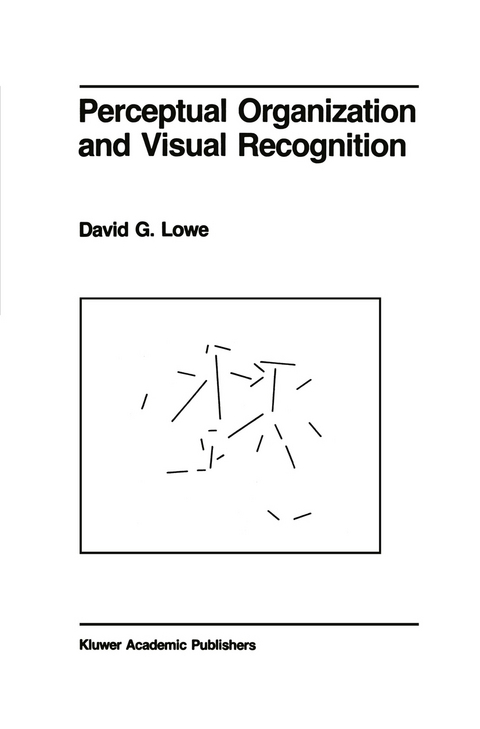
Perceptual Organization and Visual Recognition
Kluwer Academic Publishers (Verlag)
978-0-89838-172-6 (ISBN)
COMPUTER VISION is a field of research that encompasses many objectives. A primary goal has been to construct visual sensors that can provide general-purpose robots with the same information about their surroundings as we receive from our own visual senses. This book takes an important step towards this goal by describing a working computer vision system named SCERPO. This system can recognize known three-dimensional objects in ordinary black-and-white images taken from unknown viewpoints, even when parts of the object are undetectable or hidden from view. A second major goal of computer vision re search is to provide a computational understanding of human vision. The research presented in this book has many implica tions for our understanding of human vision, particularly in the areas of perceptual organization and knowledge-based recogni tion. An attempt has been made to relate each computational result to the relevant areas in the psychology of vision. Since the material is meant to be accessible to a wide range of inter disciplinary readers, the book is written in plain language and attempts to explain most concepts from the starting position of the non-specialist. vii viii PREFACE One of the most important conclusions ansmg from this research is that visual recognition can commonly be achieved directly from the two-dimensional image without any prelim inary reconstruction of depth information or surface orienta tion from the visual input.
1. Introduction.- 1.0 Overview of spatial vision.- 1.1 Two viewpoints on computer vision.- 1.2 A demonstration of perceptual organization.- 1.3 Specific functions of perceptual organization.- 2. Previous Research.- 2.1 Gestalt psychology and perceptual organization.- 2.2 The principle of simplicity.- 2.3 Grouping as the formation of causal relations.- 2.4 The role of grouping in computer vision systems.- 3. The Significance of Image Relations.- 3.1 Probability of accidental occurrence.- 3.2 Limiting computational complexity.- 3.3 Conclusions.- 4. The Segmentation of Image Curves.- 4.1 Previous research on curve segmentation.- 4.2 Significance of a curve segmentation.- 4.3 Selecting the most significant structures.- 4.4 Demonstration of the algorithm.- 4.5 Evaluation and future research.- 5. The Use of Viewpoint Invariance.- 5.1 Three-space inferences from image features.- 5.2 Recovery of 3D properties from line drawings.- 5.3 A demonstration of three-space inference.- 5.4 Conclusions and future development.- 6. Model-based Search and Inference.- 6.1 Searching the space of possible viewpoints.- 6.2 Searching the space of possible objects.- 6.3 Summary.- 7. The Verification of Interpretations.- 7.1 Viewpoint determination in human vision.- 7.2 Definition of the problem.- 7.3 Previous research on viewpoint determination.- 7.4 Formulation of perspective projection.- 7.5 Newton-Raphson convergence.- 7.6 Solving for model parameters.- 7.7 Matching lines instead of points.- 7.8 Implementation and future research.- 8. The Scerpo Vision System.- 8.1 Edge detection.- 8.2 Perceptual organization.- 8.3 Matching and evidential reasoning.- 8.4 Verification.- 8.5 System performance and future extensions.- 9. Conclusions.- 9.1 Directions for future development.- Bibliographic Index.
| Erscheint lt. Verlag | 30.6.1985 |
|---|---|
| Reihe/Serie | The Springer International Series in Engineering and Computer Science ; 5 |
| Zusatzinfo | XII, 162 p. |
| Verlagsort | New York |
| Sprache | englisch |
| Maße | 155 x 235 mm |
| Themenwelt | Informatik ► Grafik / Design ► Digitale Bildverarbeitung |
| Informatik ► Theorie / Studium ► Künstliche Intelligenz / Robotik | |
| ISBN-10 | 0-89838-172-X / 089838172X |
| ISBN-13 | 978-0-89838-172-6 / 9780898381726 |
| Zustand | Neuware |
| Haben Sie eine Frage zum Produkt? |
aus dem Bereich


